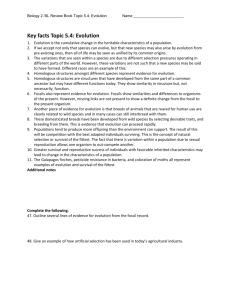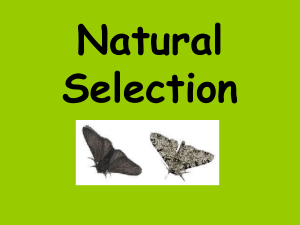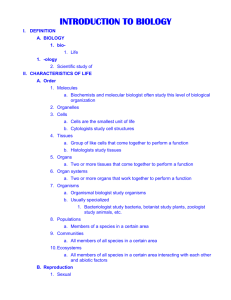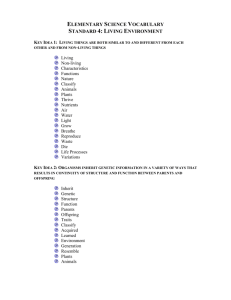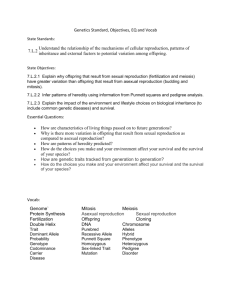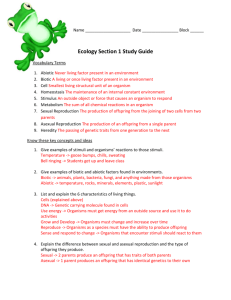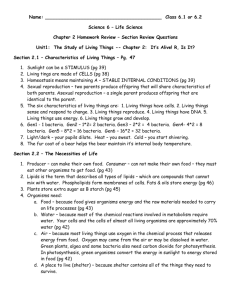Topic 5: Ecology and ecosystems
advertisement
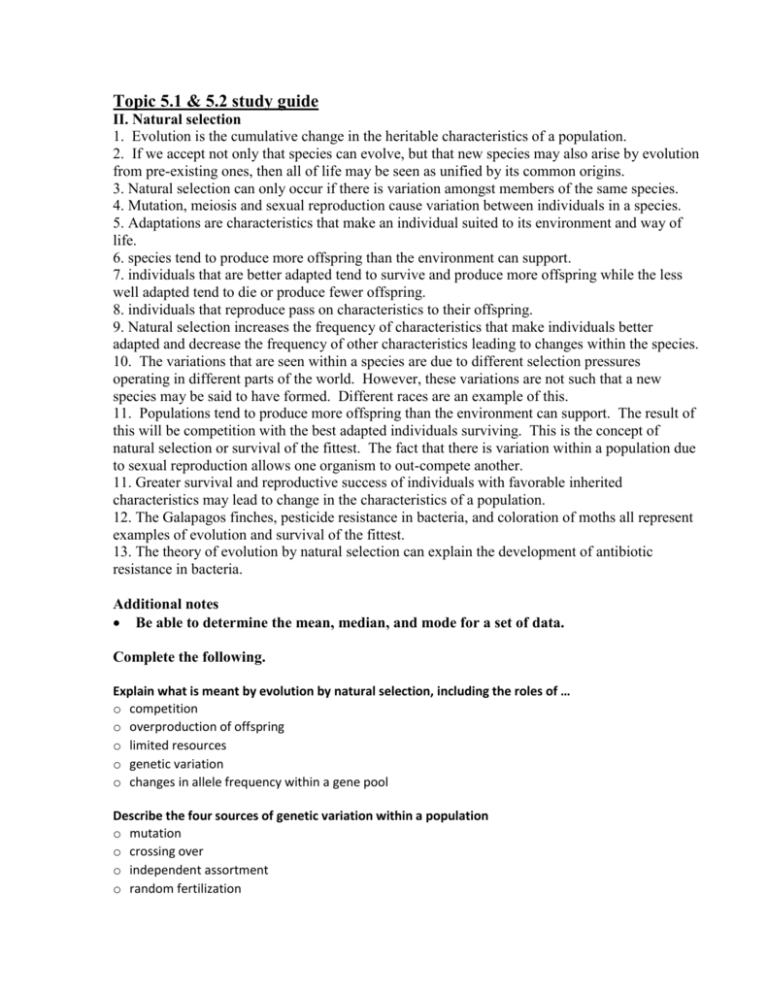
Topic 5.1 & 5.2 study guide II. Natural selection 1. Evolution is the cumulative change in the heritable characteristics of a population. 2. If we accept not only that species can evolve, but that new species may also arise by evolution from pre-existing ones, then all of life may be seen as unified by its common origins. 3. Natural selection can only occur if there is variation amongst members of the same species. 4. Mutation, meiosis and sexual reproduction cause variation between individuals in a species. 5. Adaptations are characteristics that make an individual suited to its environment and way of life. 6. species tend to produce more offspring than the environment can support. 7. individuals that are better adapted tend to survive and produce more offspring while the less well adapted tend to die or produce fewer offspring. 8. individuals that reproduce pass on characteristics to their offspring. 9. Natural selection increases the frequency of characteristics that make individuals better adapted and decrease the frequency of other characteristics leading to changes within the species. 10. The variations that are seen within a species are due to different selection pressures operating in different parts of the world. However, these variations are not such that a new species may be said to have formed. Different races are an example of this. 11. Populations tend to produce more offspring than the environment can support. The result of this will be competition with the best adapted individuals surviving. This is the concept of natural selection or survival of the fittest. The fact that there is variation within a population due to sexual reproduction allows one organism to out-compete another. 11. Greater survival and reproductive success of individuals with favorable inherited characteristics may lead to change in the characteristics of a population. 12. The Galapagos finches, pesticide resistance in bacteria, and coloration of moths all represent examples of evolution and survival of the fittest. 13. The theory of evolution by natural selection can explain the development of antibiotic resistance in bacteria. Additional notes Be able to determine the mean, median, and mode for a set of data. Complete the following. Explain what is meant by evolution by natural selection, including the roles of … o competition o overproduction of offspring o limited resources o genetic variation o changes in allele frequency within a gene pool Describe the four sources of genetic variation within a population o mutation o crossing over o independent assortment o random fertilization What contributions does sexual reproduction provide to the concept of natural selection and survival of the fittest? What causes competition in the explanation for natural selection? According to evolution by natural selection, what will happen to individuals with characteristics that are poorly adapted to their environment? How are the characteristics of well-adapted organisms passed on to future organisms? Explain how antibiotic resistance has developed in bacteria. What is the major source of genetic change within bacteria that have developed antibiotic resistance? Explain evolution of a species by natural selection in response to environmental change. Explain how variation in a population results from the recombination of alleles. Describe how sexual reproduction promotes genetic variation within a species. Explain briefly Darwin’s theory of evolution. State two ways in which the remains of past living organisms have been preserved. Outline the causes of variation in a population. Explain the evidence for evolution provided by the pentadactyl limb. Discuss the theory of evolution by natural selection. Describe the evidence for evolution as shown by the geographical distribution of living organisms. Describe the importance of changes in allele frequency for the evolution of one species into another. Outline the role of variation in evolution. State two reasons why the fossil record may be incomplete. Outline the process of speciation Outline the evidence for evolution provided by homologous structures.
